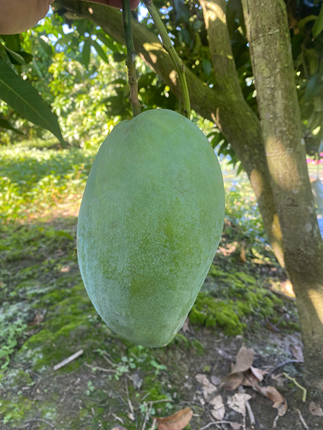Mango (Mangifera indica L.) is a high-value fruit crop and one of the most important tropical fruits with great export potential. According to the Department of Crop Production (2021), the Mekong Delta is the largest mango-growing region in Vietnam, covering 47,880 hectares with various cultivars such as Hoa Loc Sand mango, Cat Chu, and Tuong green-skinned mango. Among these, Hoa Loc Sand mango stands out for its superior quality, high economic value, and strong market demand (Tran Van Hau, 2005). However, mango harvesting during the main season tends to be highly concentrated, resulting in a surplus and lower prices. At other times of the year, mango prices can be several times higher (Nguyen Bao Ve & Le Thanh Phong, 2011). Therefore, inducing mango flowering at different times of the year is a necessary solution.
Tran Van Hau et al. (2018) concluded that when applying UCZ at rates of 1.0, 1.5, and 2.0 g a.i./m canopy diameter and PBZ at 1.5 g a.i./m canopy diameter on Hoa Loc Sand mango, the highest flowering rates (85.5–90%) were observed in treatments using UCZ at 1.5–2.0 g a.i./m canopy diameter. The average inflorescence length was 42.5 cm in the main season and 41.6 cm in the off-season. According to Tran The Tuc (1998), each inflorescence ranges from 10–60 cm in length and carries multiple flower branches, making inflorescence length highly variable. Fruit set rates between the treatment model and control differed significantly at the 5% level (t-Test). In the main season, the fruit set rate of the treatment (30.5%) was higher than that of the control (24.5%). In the off-season, the fruit set rate reached 21.5% in the treatment model, compared to 19.3% in the control. In a study evaluating the effects of different chemical treatments on flowering and fruit setting in Himampasand mango, Gopu et al. (2015) found that treatment with 1.5 g/L UCZ produced the highest proportion of hermaphrodite flowers and the best fruit set rate among the treatments.

The average fruit weight did not differ significantly between the treatment and control. Specifically, average fruit weight was 434.6 g in the main season and 400.5 g in the off-season. According to Ton That Trinh (1995), Hoa Loc Sand mangoes typically weigh between 350–500 g per fruit. Fruit weight per tree and yield (tons/ha), however, showed statistically significant differences. In the main season, fruit weight per tree averaged 41.5 kg in the treatment and 38 kg in the control. Lima et al. (2016) reported the highest fruit yield per tree at 57.98 kg, with the number of fruits per tree increasing by 167%, contributing to a total yield of 9.78 tons/ha. Yields differed significantly at the 1% level: in the treatment model, yield reached 8.3 tons/ha in the main season and 8.1 tons/ha in the off-season, compared to 7.6 and 6.5 tons/ha, respectively, in the control.

Total acidity (TA), vitamin C content, and Brix level between the treatment and control in the main season averaged 0.39 mg/L, 9.9 mg/100g, and 22.1%, respectively. In the off-season, these values were 0.45 mg/L, 10.16 mg/100g, and 21.6%, respectively. According to Tran Van Hau et al. (2015), when Brix reaches 21%, dry matter content is 26–28%, the edible pulp ratio is 81–82%, and the fruit density is 1.02, Hoa Loc Sand mangoes achieve optimal quality. The peel and seed make up only 17–20% of the total fruit weight, meaning that the edible portion of the mango is very high, around 79–80%. Tran Van Hau (2013) reported that flower induction using PBZ combined with thiourea did not negatively affect fruit quality indicators such as pulp ratio, Brix, TA, or vitamin C.
The flowering induction model helped reduce the amount of chemical treatment needed by 25%, leading to economic benefits for farmers. Moreover, the care procedures under this model contributed to ensuring fruit quality met VietGAP safety standards and helped minimize negative environmental impacts.
Ngày đăng: 29-05-2025

